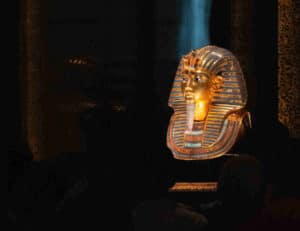The concept of Ancient Egypt refers to an extraordinarily long period in the history of this country: more than 3000 years, from approximately 3050 BC to 30 BC. In spite of being a very long period, there was a certain cultural continuity, but also important differences from one period to another. Therefore, in order for you to better understand and appreciate what each dynasty contributed to Ancient Egypt, here are a few hints, focusing on its four great periods: the Ancient Empire, the Middle Empire, the New Empire and the Ptolemaic period.
The dynasties of the Ancient Empire (2686-2160 B.C.)
It spans from Dynasty III to VI and was the first period of splendor of Ancient Egypt, when its pharaohs acquired unprecedented power and were treated as true intercessors with the gods. And to illustrate this, nothing better than to mention their great achievements: the pyramids. From the first, as an evolution of the mastabas(Saqqara Pyramid, Angled Pyramid), to the most humble of the end of this period, through the most famous and iconic: those of Cheops, Chephren and Mycerinus, of the IV dynasty.
In addition, during this period hieroglyphic writing began to be used as a decorative resource, for example in the interior of the pyramids. The epicenter of their masterpieces is located in Giza and Saqqara, both with large necropolises.
The dynasties of the Middle Empire (2050-1750 B.C.)
This era, which covers the eleventh and twelfth dynasties and ended the first period of instability and division in ancient Egypt (First Intermediate Period), is less well known than that of the Old Empire and the New Empire, but an observant visitor will recognize and appreciate its main achievements. Its epicenter moved to the new capital, Thebes (today Luxor) and among its most interesting works are the sculptures of the pharaohs, represented with attributes of gods, but also the smaller and humanized statues of the local governors (nomarchs).
The dynasties of the New Empire (1550-1069 B.C.)
From the XVIII to the XX dynasty, this period is one of the most fascinating for every traveler, with well-known names such as Ramses II, Akhenaton or Tutankhamun. Among his great contributions is the development of subway tombs, reaching the zenith of wealth in the Valley of the Kings of Luxor. The construction of great temples is another hallmark of the period, such as Luxor and Karnak.
In addition, there is a proliferation of giant sculptures, such as those of the aforementioned Ramses II or the Colossi of Memnon, also in Luxor. But in addition to all that is concentrated in this city (ancient Thebes), there are other destinations of interest for this period, such as Abydos, with its temple of Seti I as the summit of the mural decoration inside (polychrome bas-reliefs), or the imposing temples of Abu Simbel.
The dynasties of the Ptolemaic period (332-30 B.C.)
For many, this period is one of the most underrated of Ancient Egypt, as it has bequeathed us authentic masterpieces. After a long period of relative decadence or stagnation (Third Intermediate Period and Lower Epoch), its rulers of Greek origin moved their capital to Alexandria, where a clear Hellenizing tendency can be perceived. But in return, in Upper Egypt they developed a policy of cultural continuity to ingratiate themselves with the local population, with spectacular temples such as those of Kom Ombo, Philae or Edfu, with their continuation in Roman times.
All these features can be discovered and compared during your trip to the various tourist destinations in Egypt, but also if you visit the Great Egyptian Museum of Giza, since its main exhibition halls are organized chronologically.



